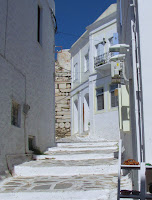

















 Treasures in the sand: the magic of sea glass
Treasures in the sand: the magic of sea glass




 Red sea glass. It is said to be the most coveted of the many sea glass colors. Where does it come from? Why is it so rare? And can it be found any more? At left: A rare handful of smooth, rare red gems. Photo copyright: Mary Beth Beuke.
Red sea glass. It is said to be the most coveted of the many sea glass colors. Where does it come from? Why is it so rare? And can it be found any more? At left: A rare handful of smooth, rare red gems. Photo copyright: Mary Beth Beuke. llection and after interviewing and seeing hundreds of other collector's compliations from across the globe, it's a proven fact that red is one of the most difficult colors of sea glass to find. It's been said to take a lifetime of hunting to find just one piece. At right: A Pacific Ocean red on a rocky beach right where I found it at low tide. Copyright: Mary Beth Beuke
llection and after interviewing and seeing hundreds of other collector's compliations from across the globe, it's a proven fact that red is one of the most difficult colors of sea glass to find. It's been said to take a lifetime of hunting to find just one piece. At right: A Pacific Ocean red on a rocky beach right where I found it at low tide. Copyright: Mary Beth Beuke sea glass. Today such quantities and and quality is unheard of.
sea glass. Today such quantities and and quality is unheard of.Why is red sea glass so rare? One reason is that red glass was not a common color in glass blowing. The additives needed to make the reds and orange glass colors were expensive and difficult to come by 100 years ago. In fact, bright red glass was never really mass produced in bottle form ever in the US. Many pieces that we have originated from such obscure items as pre-1950's car tail lights or boat signal lights. Below: Rare red on coral and lava - Ka Lae, Hawaii - copyright: Mary Beth Beuke
There is a section of the Pacific Ocean that is so infamous  for it's hundreds of shipwrecks between the 1,700's and mid 1,900's that it is called the Pacific Ocean Graveyard. Hundreds of pieces that we've gathered come from these very beaches. Above: A rare marine "hurricane distress lamp" from the mid 1800's. From a Vancouver, Island Canada shipwreck site. Photo copyright: West Sea Co.
for it's hundreds of shipwrecks between the 1,700's and mid 1,900's that it is called the Pacific Ocean Graveyard. Hundreds of pieces that we've gathered come from these very beaches. Above: A rare marine "hurricane distress lamp" from the mid 1800's. From a Vancouver, Island Canada shipwreck site. Photo copyright: West Sea Co.
For More About Red Sea Glass: Click Here
For More About Sea Glass Color Rarity: Click Here
